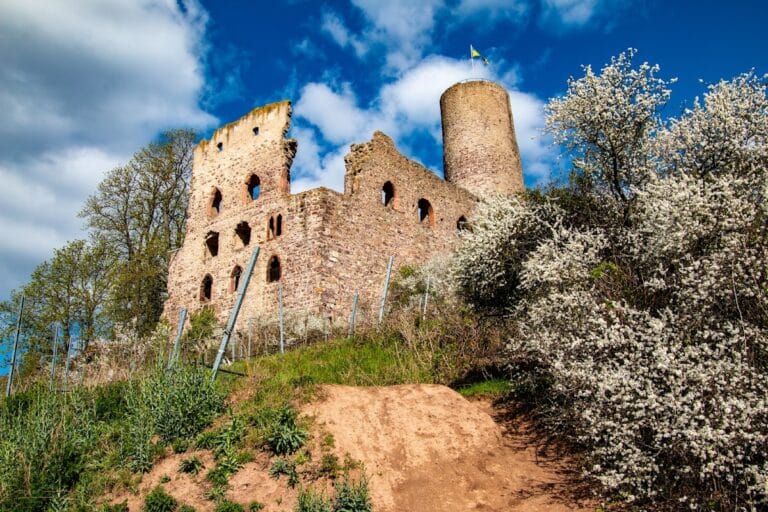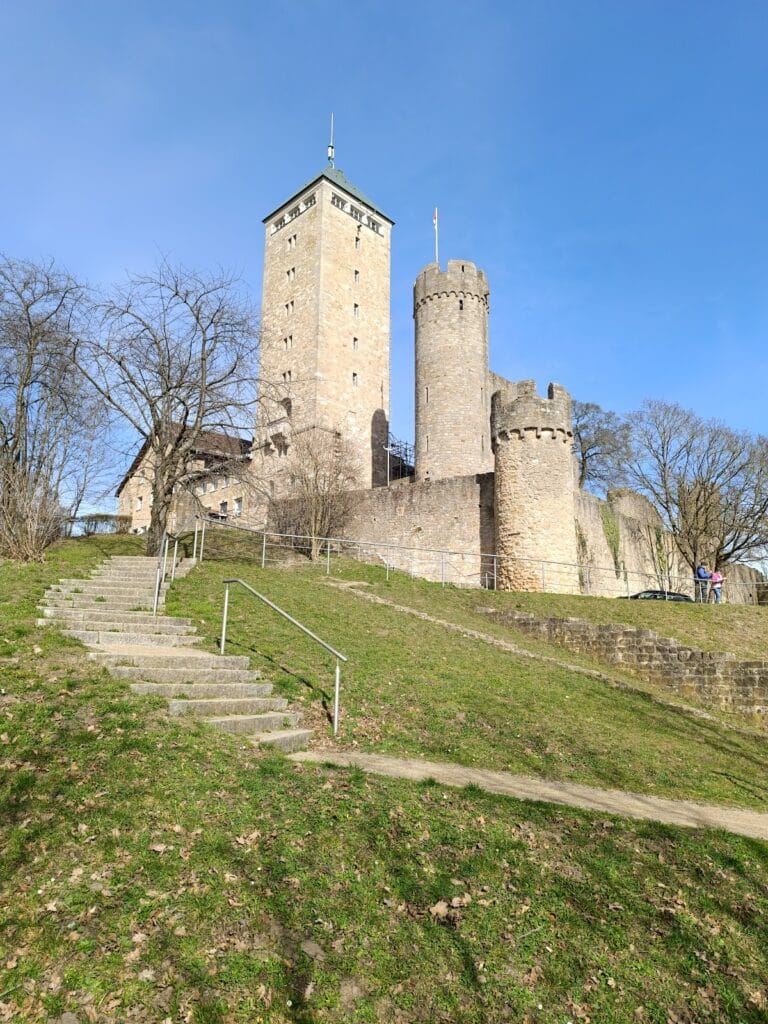Windeck Castle: A Medieval Fortress in Weinheim, Germany
Visitor Information
Google Rating: 4.4
Popularity: Medium
Google Maps: View on Google Maps
Official Website: www.burgruinewindeck.de
Country: Germany
Civilization: Medieval European
Remains: Military
History
Windeck Castle is situated in the municipality of Weinheim, Germany. It was originally constructed by the forces associated with the Lorsch Abbey, an influential imperial abbey of the early medieval period.
The initial fortification on the site was built around 1110 to safeguard the abbey’s estates. This early castle, however, was destroyed just a few years later in 1114. Between approximately 1125 and 1130, a new castle was erected on the same foundations, marking the beginning of the structure whose ruins remain today.
Following the collapse of Lorsch Abbey’s independence in 1232, Windeck Castle became the center of ongoing disputes between two dominant regional powers: the Archbishopric of Mainz and the Electoral Palatinate. During this turbulent period, ownership of the castle changed hands several times. Ultimately, it was secured by the counts of the Palatinate; sources differ on the precise date, placing this transition in either 1264 or 1344.
Unlike many castles of the time, Windeck was not continuously held by one noble family. Instead, it was administered by appointed castle officials known as Burgmänner. Nearby villages had duties including the maintenance of the castle and supporting its garrison, reflecting a communal involvement in its defense and upkeep.
Throughout the Thirty Years’ War (1618–1648), the castle endured some damage but remained standing. Repairs were undertaken in 1663 to restore its defenses. However, the castle’s military significance came to an end in 1674 when it was plundered and destroyed by French forces led by General Henri de Turenne during the campaigns of King Louis XIV. This action left the fortress unusable for military purposes.
In the years that followed, Windeck Castle was abandoned. Locals began dismantling parts of the structure to reuse the building materials, effectively turning the site into a quarry. The property transferred to the Margraviate of Baden in 1803. Later, in 1900, it was purchased by the Counts and Barons von Berckheim, who initiated early preservation efforts to protect the remaining ruins.
Since 1978, the city of Weinheim has owned Windeck Castle. The municipal authorities have overseen extensive conservation and stabilization work, ensuring the site’s ongoing preservation and connection to its historical legacy.
Remains
Windeck Castle sits atop the Schlossberg, or Castle Hill, at an elevation of about 220 meters above sea level. The castle complex has a compact layout characterized by its medieval construction techniques and fortified design. The surviving structures primarily date from the 14th century, although parts of the underlying 12th-century buildings remain visible.
One of the oldest remnants includes the lower floors of a rectangular residential tower, located in the southern area of the site. This tower, or palas—meaning the main living hall of the castle—shows early medieval masonry work. Adjacent to this is the gatehouse, tracing back to the 12th century, which served as the controlled entrance to the fortress.
Dominating the site is the bergfried, a tall main tower common in German castles. Standing 28 meters high, the bergfried was a key defensive and lookout structure. Visitors can access its summit via a series of 111 steps organized into three staircases starting in the inner courtyard. These lead first to a terrace and battlement walk along the eastern shield wall. From there, two offset spiral staircases inside the tower ascend further, consisting of 20 and 41 steps, respectively. The upper spiral staircase is externally visible on the tower’s southwestern face.
The upper section of the bergfried measures approximately 6.20 meters in diameter and supports a tall flagpole mounted on the northwest side. Its battlements include four rectangular window niches and a parapet around 1.10 meters high on the southern side. From this vantage point, expansive views encompass the nearby Wachenburg Castle, the town of Weinheim, the surrounding Bergstraße region, the Rhine Valley, and on clear days, the Palatinate Forest and Donnersberg mountain.
Below the tower lies the “Angstloch,” an entrance to an 11-meter-deep dungeon. Such dungeons were typically used for holding prisoners under harsh conditions. The term “Angstloch,” translating roughly to “fear hole,” reflects the grim function of this subterranean chamber.
The castle walls and other masonry elements have undergone partial restoration and securing to prevent further deterioration. Conservation efforts, initiated in the early 20th century and continuing under municipal management since 1978, have preserved much of the site’s structural integrity. Today, the ruins present an evocative glimpse into the architectural and defensive strategies of a medieval castle that played an important role in the region’s historical conflicts.







